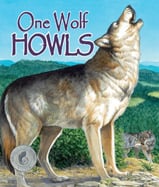Alignment to Standards for IL

| Grade | Number | Standard |
|---|---|---|
| Early Elementary | 12.A.1a | Identify and describe the component parts of living things (e.g., birds have feathers; people have bones, blood, hair, skin) and their major functions. |
| Early Elementary | 12.A.1b | Categorize living organisms using a variety of observable features (e.g., size, color, shape, backbone). |
| Early Elementary | 12.B.1a | Describe and compare characteristics of living things in relationship to their environments. |
| Early Elementary | 12.E.1b | Identify and describe patterns of weather and seasonal change. |
| Early Elementary | 17.A.1a | Identify physical characteristics of places, local and global: locations, regions, bodies of water). |
| Early Elementary | 17.B.1b | Describe physical components of ecosystems. |
| Early Elementary | 17.C.2c | Explain how human activity affects the environment. |
| Late Elementary | 12.A.2a | Describe simple life cycles of plants and animals and the similarities and differences in their offspring. |
| Late Elementary | 12.A.2b | Categorize features as either inherited or learned (e.g., flower color or eye color is inherited; language is learned). |
| Late Elementary | 12.B.2a | Describe relationships among various organisms in their environments (e.g., predator/prey, parasite/host, food chains and food webs). |
| Late Elementary | 12.B.2b | Identify physical features of plants and animals that help them live in different environments (e.g., specialized teeth for eating certain foods, thorns for protection, insulation for cold temperature). |
| Late Elementary | 12.E.2a | Identify and explain natural cycles of the Earthês land, water and atmospheric systems (e.g., rock cycle, water cycle, weather patterns). |
| Late Elementary | 13.B.2e | Identify and explain ways that technology changes ecosystems (e.g., dams, highways, buildings, communication networks, power plants). |